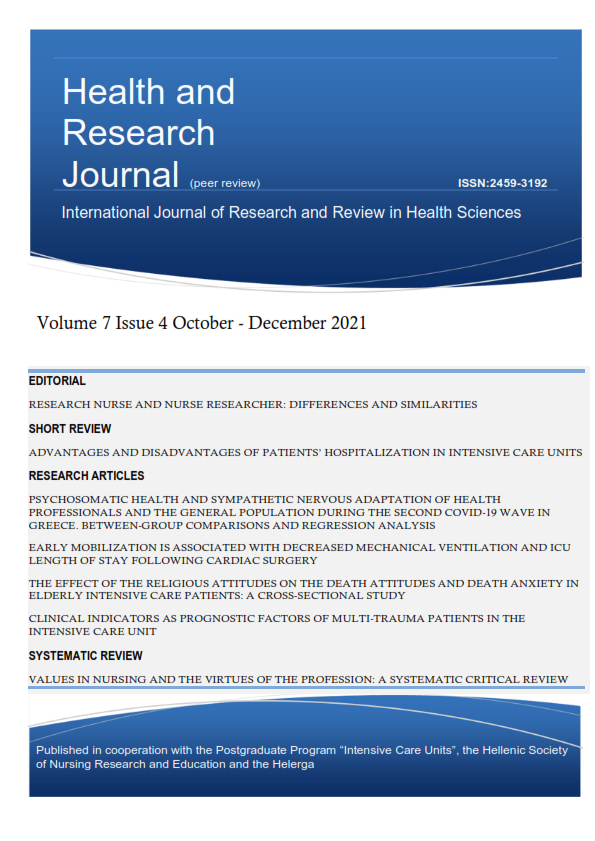Τhe effect of the religious attitudes on the death attitudes and death anxiety in elderly intensive care patients: a cross-sectional study

Abstract
Background: Negative death attitudes and death fear were reported at a high level among intensive care patients. Research indicates that nurses should know the factors affecting the death attitudes and death anxiety in intensive care patients to reduce these high levels of anxiety and negative attitudes. Religions have a strong relationship with death.
Aim: This cross-sectional study was conducted to determine the effect of religious attitudes on death attitudes and death anxiety in elderly intensive care patients.
Methods: The data of the study were collected between January 2019 and January 2020 in the intensive care unit of a university hospital in a province located in the east of Turkey. A total of 185 elderly patients participated in the study. Patient Identification Form, Ok-Religious Attitude Scale (ORAS), the Death Anxiety Scale (DAS), and Death Attitudes Profile-Revised (DAP) were used for data collection. IBM SPSS version 25.0 was used for data analysis.
Results: Most of the patients (88.6%) were at high level of self-reported religious attitudes. The mean DAS score of the patients was 9.02 ± 1.64, DAP was 120.40 ± 23.70, and ORAS was 31.25 ± 2.90. According to regression analysis, the increase in ORAS scores decreased the DAS score and increased the DAP score (p <0.05).
Conclusion: There was a negative relationship between religious attitudes and death anxiety and a positive relationship between religious attitudes and attitudes towards death in elderly patients in intensive care units. Nurses should evaluate the patients’ religious attitudes while they plan interventions to reduce patients’ death anxiety or to develop positive attitudes toward death in these patients.
Article Details
- How to Cite
-
Menekli, T., & Doğan, R. (2021). Τhe effect of the religious attitudes on the death attitudes and death anxiety in elderly intensive care patients: a cross-sectional study. Health & Research Journal, 7(4), 194–205. https://doi.org/10.12681/healthresj.28190
- Section
- Original Articles
Copyright notice:
The journal "Health and Research Journal" reserves the rights for copyright of the content of the website and also the copyright of the articles published.
By virtue of their appearance in this journal, the articles are free to be used for non-commercial purposes. However, the articles cannot and must not be used in anyway, published elsewhere or modified without any reference to the author and the first publication of the article.


